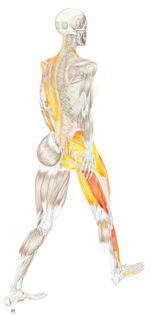
Manual Muscle Testing (MMT) implies the practitioner is engaged in the testing of a specific muscle by placing it in a specific position. By placing the structure into a specific position, one can line up bones, joints, connective tissue, muscle attachments, and muscle fibers. However, the body will always look to spread the load of force over as great an area as possible – this is efficiency. Instead of putting movement in a box by testing a specific muscle, let’s instead call this movement assessment. After we define the parameters of the movement itself, we can then have the conversation about the specific players that are involved in that movement. The next step in the assessment is to ask the body who is over and under-worked and what will get the underworked player/s back in the game to restore balance.
There is a spectrum of how muscle testing is used as an assessment tool. Orthopedic assessment uses muscle testing to act on joints to test joint structures and ligaments. That kind of testing is purposefully provocative. Physical therapists use muscle testing testing to grade muscle response to stimulus. While this kind of flavor is less intense than orthopedic, it can still be provocative. These professions are using muscle testing as a gauge for structural response. This does not take into account that the nervous system needs to have capacity to appropriately respond to movement.
Applied Kinesiology is a subset of Chiropractic. AK uses muscle testing to assess structure, physiology, and emotions. While less provocative than the previous groups, AK starts with the premise of how the nervous system responds to movement.
Applied Kinesiology is like the grandmother to DNA™. The grandfather would be physical culture and the movement arts.
Dynamic Neuromuscular Assessment™ is a strategy to have a conversation with your client’s nervous system. The global question you hold using this assessment technique is, “Can the nervous system respond appropriately to the stimulus of movement?”
Excerpt from the new DNA™ Manual distributed during DNA™ seminars!